What is chiaroscuro lighting and how do you use it in your film and photos?
Chiaroscuro is a gorgeous lighting technique used in film, still photography, and art. Let’s check out what the technique, setup, and best examples are.
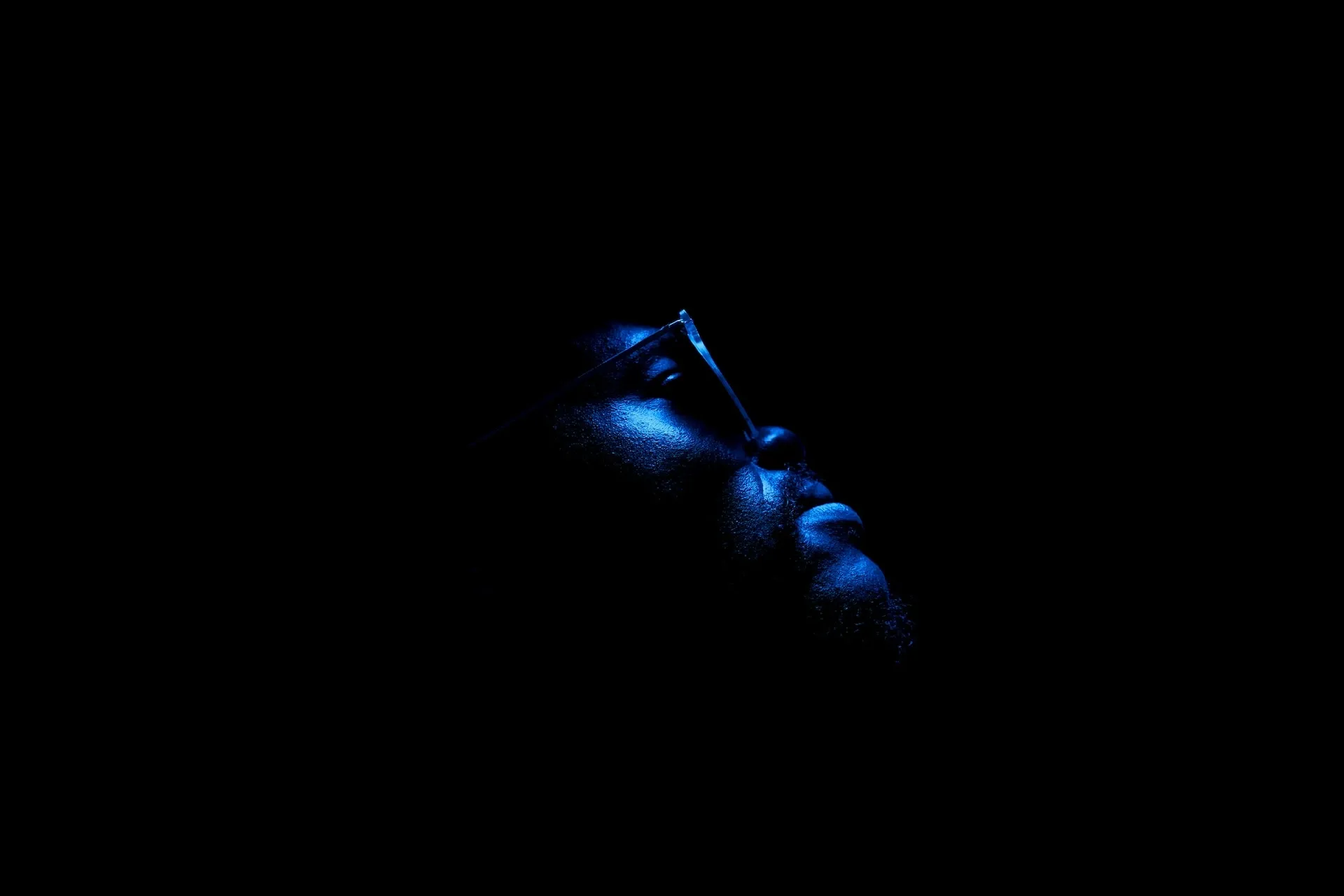
You might not have heard of chiaroscuro lighting, but you’ll have certainly seen it. Learn all about the famous technique, why it’s so popular, and how you can use it in your content.
We'll cover:
- What is chiaroscuro lighting?
- Where did chiaroscuro lighting come from?
- Why do people use chiaroscuro lighting?
- What’s the opposite of chiaroscuro lighting?
- What’s the difference between chiaroscuro lighting and tenebrism?
- How do you use chiaroscuro lighting?
- What are some examples of chiaroscuro lighting?
What is chiaroscuro lighting?
Chiaroscuro lighting – the pronunciation is kee-aa-ruh-skyuor-row, if you’re wondering – has a much simpler definition than the name suggests. In a nutshell, it’s lighting that contrasts light and dark.
The effect uses light and shadow to highlight a subject and create additional depth in the background, often making what’s happening on a 2D screen seem like it has extra dimensions. It’s usually used in film to create dramatic scenes, but can be seen in other mediums. We’ll get to some of the best examples shortly, but first, let’s dig into the history and mechanics of chiaroscuro.
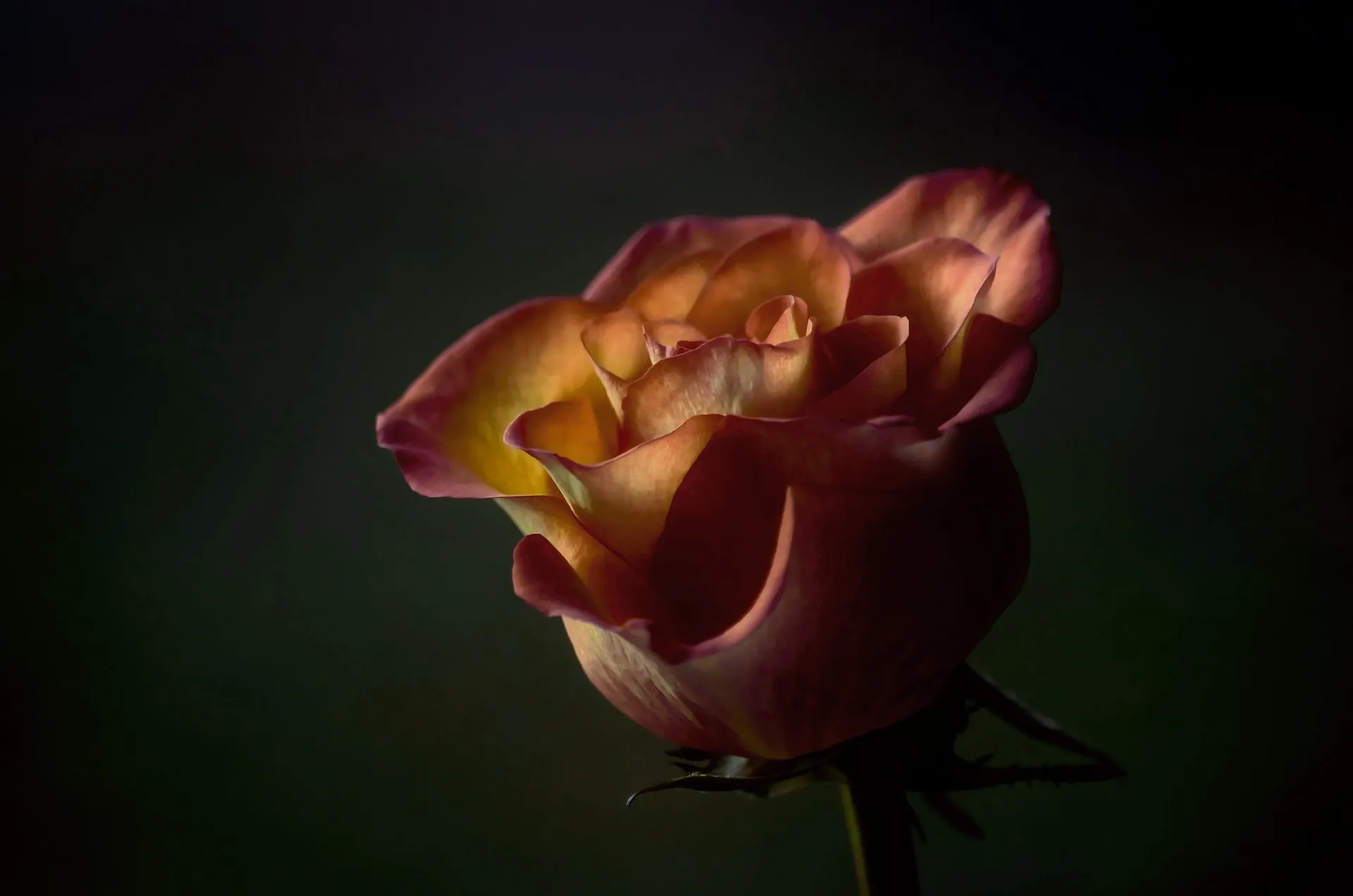
Where did chiaroscuro lighting come from?
Before chiaroscuro lighting was used in movies, it was an art movement. It originated in Italy, and is a compound term: ‘chiaro’ means ‘clear’ or ‘bright’ in Italian, whereas ‘oscuro’ means ‘dark’ or ‘obscure.’ Put the two together, and it’s bright and dark, light and shade.
You’ll have seen chiaroscuro lighting in Renaissance-era paintings by Italian painters like da Vinci and Caravaggio. People often assume that da Vinci’s Mona Lisa is chiaroscuro, but it isn’t – that artwork doesn’t dive into the deep contrast you’d usually associate with the technique.
Better examples from this period are Baglione’s Sacred and Profane Love and Lady With an Ermine by da Vinci. These paintings created incredible, crystal-clear images – you’d have never seen something like it back in those days. Later on, filmmakers took this principle and applied it to their footage, casting light and dark together.
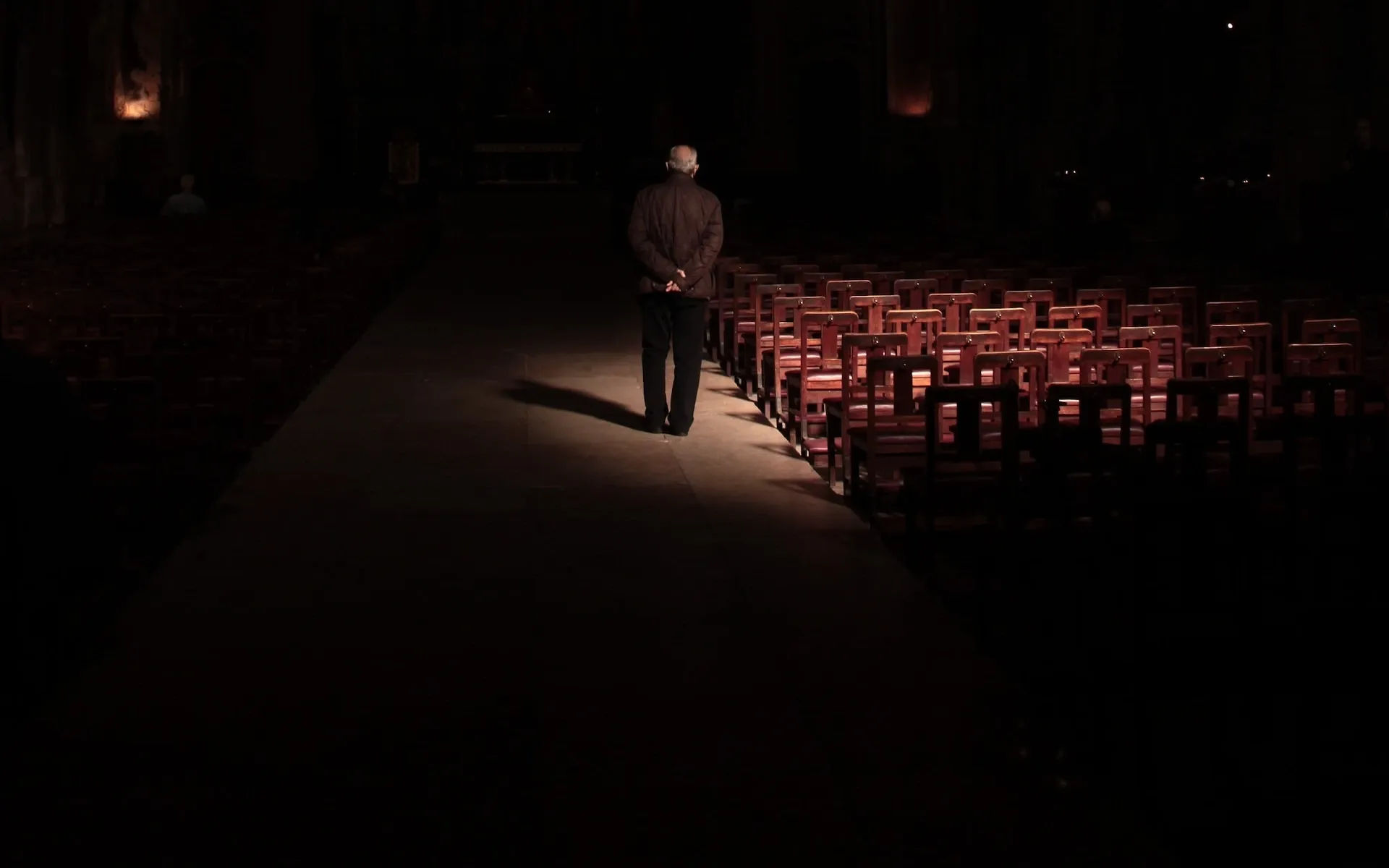
Why do people use chiaroscuro lighting?
Today, chiaroscuro lighting is mainly used in film to create striking images or evoke a certain feeling. The contrast between light and shade can help frame a subject more prominently, drawing viewers’ eyes to things they might not focus on otherwise. Horror and film noir movies helped popularize chiaroscuro lighting in cinema, as they lean on the technique to build tension.
What’s the opposite of chiaroscuro lighting?
If you want to do a full 180 and head away from chiaroscuro lighting, you’d go for flat lighting. This has low depth and contrast, and isn’t used much in movies. However, you’ll find flat lighting used in sitcoms and reality TV, as those mediums often mimic real life. It’d be kind of strange if Friends were lit like a German Expressionist film about vampires.
What’s the difference between chiaroscuro lighting and tenebrism?
Tenebrism is another technique born from chiaroscuro lighting. They’re often bunched together as one and the same, but tenebrism is much more extreme than chiaroscuro lighting. The blacks in a tenebrism-style painting or scene will often be completely black, framing the subject in an even more unsettling way.
Before we dig into how to use chiaroscuro lighting and look at some of the best examples, let’s take a second to think about other aspects of your content. What else could complement your stark, affecting compositions?
Music. After all, the soundtrack can make or break your content – don’t let an ill-placed song cramp your style. Check out our catalog of more than 40,000 tracks, covering just about every genre under the sun. We’re sure you’ll be able to find the perfect match.

How do you use chiaroscuro lighting?
Curious about how to run a chiaroscuro lighting setup, or what equipment you might need? Breathe a sigh of relief – it’s pretty straightforward. Let’s run through some good-to-knows for chiaroscuro lighting.
You don’t need expensive equipment
Chiaroscuro lighting doesn’t need to be achieved with a certain filter or piece of gear. It occurs when certain elements are framed against others – it’s a visual contrast, which can be achieved without any post-production trickery. You can do that for free, with whatever filming equipment you have on hand.
However, to make your footage shine, you’ll still need the correct tools for the job. Camera accessories, fun specialist lenses like split diopters, systems like follow focus that’ll change how your shot tracks – do you have everything you need to capitalize on your chiaroscuro lighting? The footage doesn’t have to look a million dollars, but it should still look good.
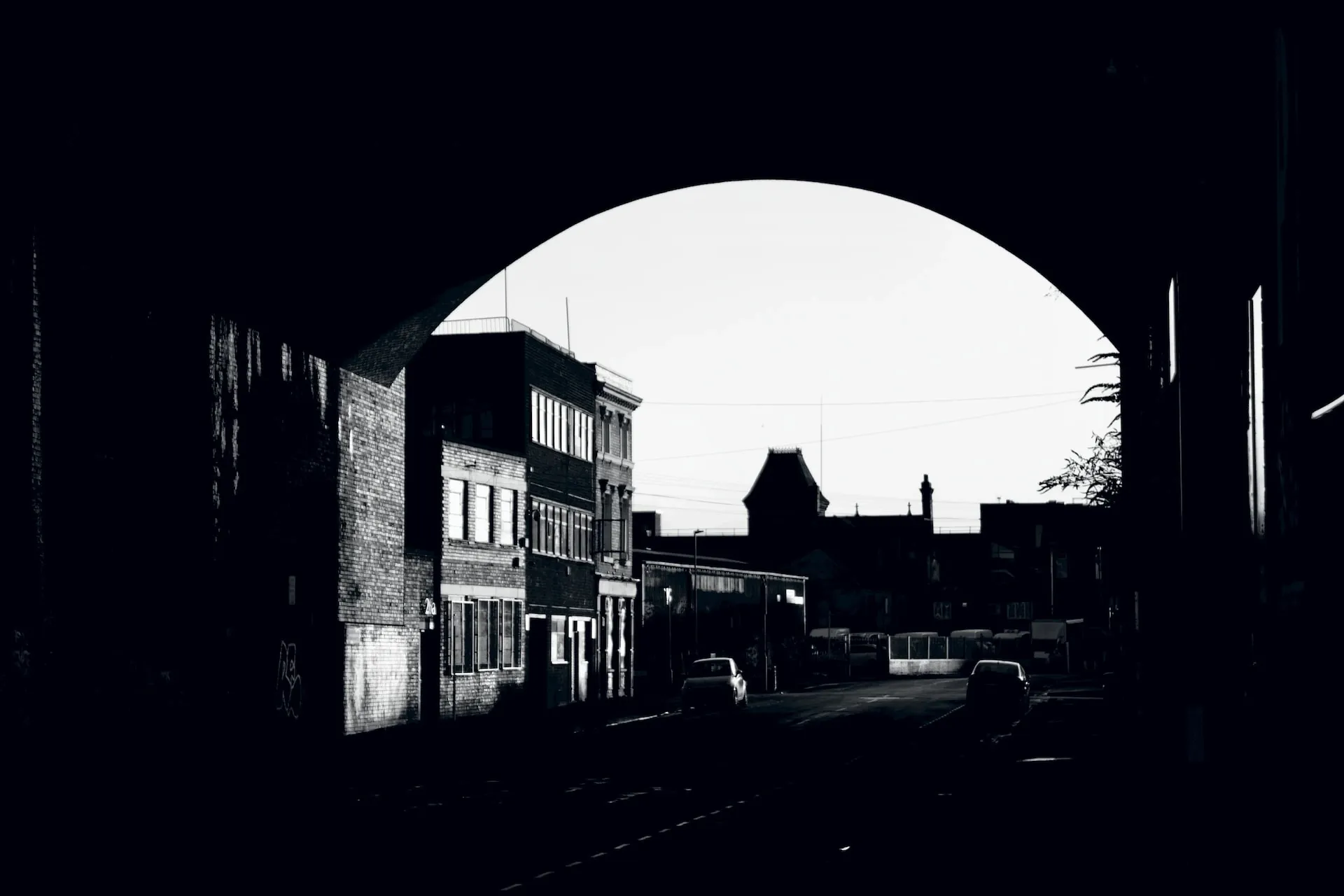
Try using just one low key light
Using just one low key light will light up your subject from the front, or wherever you choose to position your key light. In a controlled environment, the key light will ideally be your only light source. This will help cast long, dramatic shadows while keeping your subject nice and bright, nailing the chiaroscuro effect.
Practice with still images
You might be tempted to create juicy, rich video content with chiaroscuro lighting, but hold on a minute. If you’ve never used it before, you’ll probably benefit from practicing with still images. Take a subject, experiment with your lighting set-up, and see how the effect changes when you move something in your lighting rig, or move your subject.
Use chiaroscuro lighting alongside other techniques
Chiaroscuro lighting won’t create an atmosphere in isolation. Even if you have the right equipment and have put the hours in practicing with still images, there's so much more to your content than how it’s lit.
Are you following the 180-degree rule? How’s your lens flare? How does your lighting sit in a parallel edit? Chiaroscuro is a stylistic choice, rather than something to hang your content on – as long as everything else in your filmmaking toolbox is well-sharpened, you’ll be good to go.
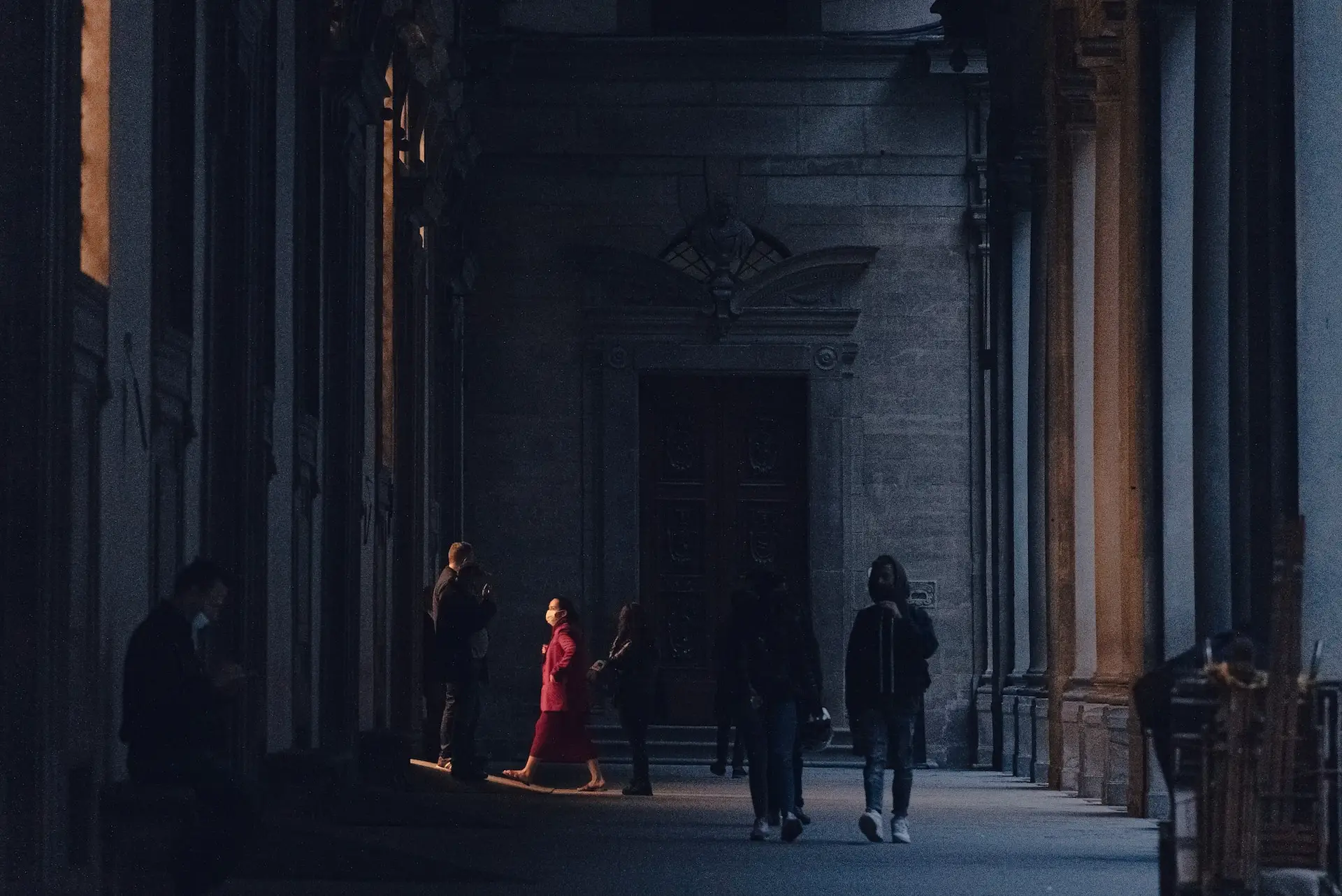
What are some examples of chiaroscuro lighting?
Now that we’re wrapping up, let’s rattle through a few best-in-class examples of chiaroscuro lighting.
The Cabinet of Dr. Caligari (1920)
The Cabinet of Dr. Caligari is a landmark moment in cinema, and chiaroscuro lighting helped with that. The classic German Expressionist movie is shot in stark black-and-white, often plunging the edges of the screen into darkness. This pulls intense focus on the characters and bizarre, twisted scenery, making the whole film seem dream-like and unreal. Makes sense, really, given the film’s about an evil hypnotist.
The Exorcist (1973)
Routinely name-dropped as one of the greatest movies of all time, The Exorcist is a morality play of the most deadly kind. A 12-year-old girl, Regan, is possessed by a demon. Curse words, green-ish bodily fluids, and horrible setpieces follow. It’s full of iconic shots, but the frame used on the poster is one of the most powerful instances of chiaroscuro lighting.
Max von Sydow’s character, Father Merrin, stands outside Regan’s house. He’s arrived to perform an exorcism, hoping to rid the poor girl of the demon once and for all. Merrin’s silhouette is cast by the light in the window – he looks so small. The image neatly sums up what’s about to happen: a battle between light and dark, good and evil. You could unpack The Exorcist’s themes for hours on end, but that one image is as Cliff Notes as you can get.
The Lighthouse (2019)
Looking at chiaroscuro lighting used in modern-day movies, The Lighthouse is a shining example. It’s a wickedly dark drama shot in black-and-white, lit with on-location lighting rather than a key lighting set-up. The result? Old. Spooky. Exaggerated. Chiaroscuro lighting’s popped up in movies for more than a century at this point, and The Lighthouse found new ways to get freaky with it.
Now that you’ve learned the basics of chiaroscuro lighting, it’s time to experiment with your footage and see how you can make it work for you.
And if your content needs a musical boost, you don’t have to settle. Epidemic Sound’s packing more than 40,000 high-quality tracks to suit every mood.
Our catalog is high-quality, affordable, and safe. An Epidemic Sound subscription goes beyond royalty-free music, removing the headache of licensing and freeing you up to do what you do best. You can enjoy the safety of our license hand-in-hand with our massive catalog of 40,000 tracks, covering just about every genre you can think of. You’ll also gain unlimited access to our advanced search functions — finding the right sound’s never been easier.
It’s better than royalty-free. It’s worry-free. Get started with Epidemic Sound below.

Filmmakers, look this way! Level up your skills and learn more about background music for videos, including:
Make your video editing count and browse our massive catalog of music for filmmakers.

